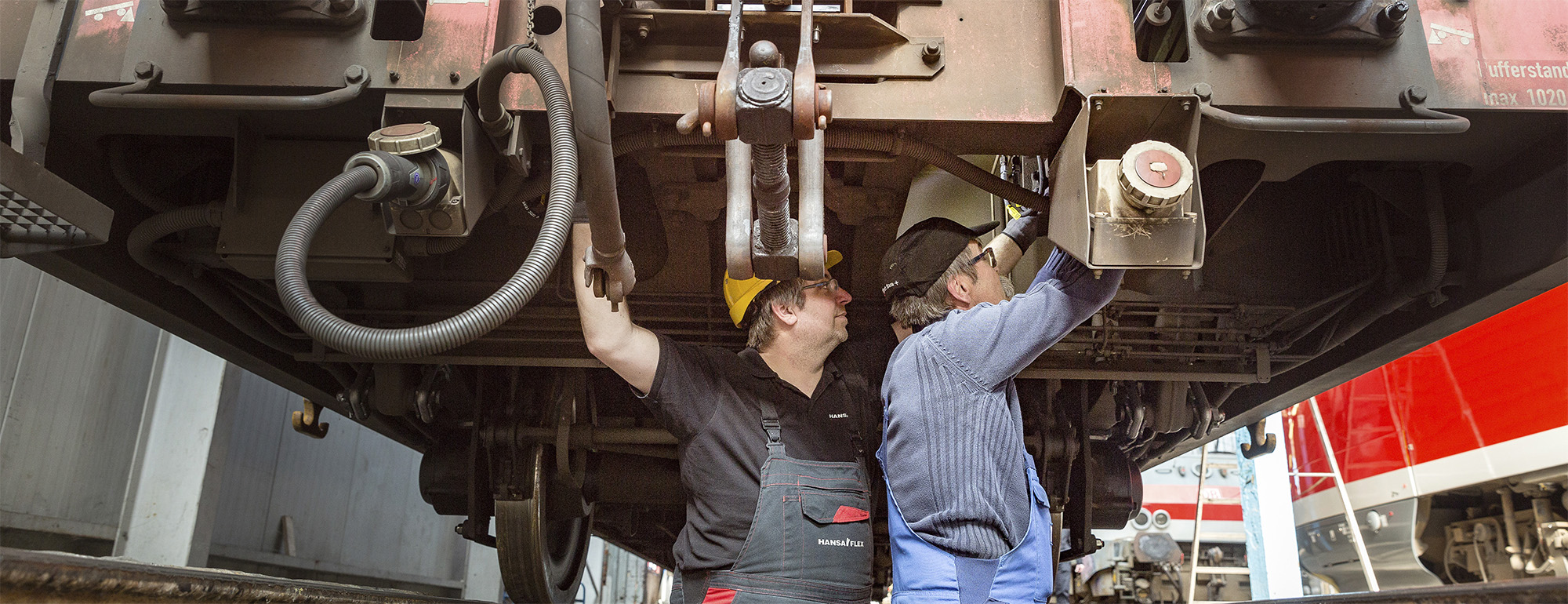




Do you have any questions about our services and products? Or do you need help?
Sundays and public holidays are excluded

HANSA-FLEX is a partner of Stadler Deutschland GmbH in the integration of air-conditioning lines in the first air-conditioned S-Bahn trains for the Berlin/Brandenburg region.






The RailMaint works in Delitzsch and HANSA-FLEX jointly maintain rail freight waggons for premium-class automobiles.

The HANSA-FLEX Fluid Service in operation at Holcim: how clean oil contributes to sustainable cement production.

A remote-controlled robot on a mobile platform: the M-Group is revolutionising the maintenance of industrial furnaces.